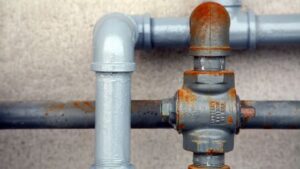What to Do if You Suspect Tree Roots are Causing Damage to Your Main Sewer Line 2021
Most people have beautiful, established trees all over their yard. Although they clean the air and provide shade on a hot sunny day, they can cause some serious damage to your main sewer lines. How? Well, as trees get bigger, the roots get more established. Since plumbing systems are underground, the tree’s roots spread out and grow deeper into the ground. Some of them end up in main lines, creating blockages and even the breakage or collapse of water pipes. Once the roots have made their way into the mainline, you’ll need to call an emergency plumbing company. In this article, we share what to do if you suspect tree roots are causing damage to your main sewer line.
Watch for Slow Drains.
If you start to notice your drains slowing down, there is a big possibility that tree roots have grown into your main line. This should make sense if you have trees all around your property. Your drain may just be clogged, so try using a plumbing drain solution. If that doesn’t work, you’ll need to hire a plumber for an inspection.
Gurgling Noises in Your Drains
Even if water is draining properly but that action is always accompanied by gurgling sounds, that is an indication that there is something wrong with your plumbing. A properly working plumbing system should not make that disturbing sound. Plumbing companies in Sacramento say that this sound is likely due to a blockage. It’s best to contact your plumber immediately.
Water Stops Draining
This means that there is blockage and this is a great inconvenience to any household. Not only does it create a mess, but it also exposes your home to germs and bacteria that can lead to diseases. If corrosive solutions don’t work, then it’s quite likely that the problem is not just a regular clog – it is something bigger and does not “melt” easily.
If these are plumbing issues you are dealing with at home, then it’s time to call professional plumbers to have a look. It is always better to be safe than sorry. Also, if your plumbing woes are truly due to tree roots in your main sewer line, then that is not going to be a quick job to accomplish – the area around your mainline would have to be dug up, the roots have to be cut, and removed, the damages repaired, and so on. So call in the Fox Valley Plumbing pros as soon as possible to restore order in your home.
Editor’s note: This post was originally published in October 2016 and has been completely revamped and updated for accuracy and comprehensiveness.




 The sewer lines on your property are important pieces of infrastructure because they move wastes and water away from your home. It is therefore essential for you to maintain this system so that it gives you years of trouble-free service. One of the crucial things you should know is the location of the
The sewer lines on your property are important pieces of infrastructure because they move wastes and water away from your home. It is therefore essential for you to maintain this system so that it gives you years of trouble-free service. One of the crucial things you should know is the location of the